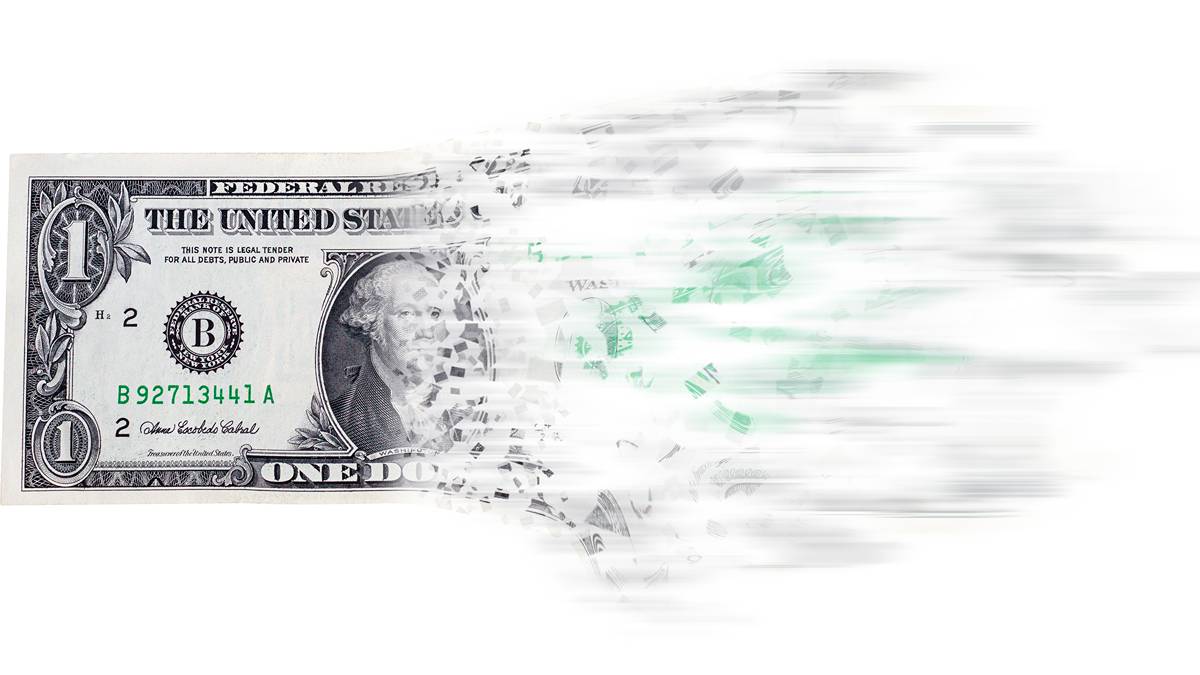Why the US dollar is likely to keep falling in 2025
The US dollar has long been the undisputed anchor of the global financial system. But in 2025, it increasingly appears that the tide is turning.

Stockhead
Don't miss out on the headlines from Stockhead. Followed categories will be added to My News.
The US dollar has long been the undisputed anchor of the global financial system. But in 2025, it increasingly appears that the tide is turning.
A combination of economic headwinds, structural misalignments, political interventions, and shifting global alliances are all weighing on the greenback – and the pressure is unlikely to let up anytime soon.
Overvalued
Even after a roughly 5% decline in its trade-weighted value over the past several months, the dollar remains significantly overvalued compared to its historical average.
According to many experts, the dollar would need to fall by 25–30% to return to its long-term fair value. This level of imbalance is rarely sustained for long without a correction – and when such corrections happen, they tend to be protracted and deep.
Think back to the dollar slumps of the mid-1980s and early 2000s: both periods saw steep, sustained declines driven by structural imbalances not unlike those we’re seeing today.
What’s different now is that the dollar isn’t just being pulled lower by economic gravity; it’s also being pushed.
Investor sentiment
Institutional investors are rapidly losing confidence in the dollar as a store of value.
The latest Bank of America Global Fund Manager Survey shows that more than 60% of respondents expect the dollar to weaken further over the next 12 months – the most bearish reading in nearly 20 years.
It reflects a broader reassessment of the US’s economic trajectory under the current administration and a growing sense that better opportunities exist elsewhere, particularly in emerging markets and commodity-linked currencies.
In addition, fund flows indicate that global investors are reallocating away from US assets, which further weighs on the dollar.
The S&P 500 is still near record highs, but underneath the surface, capital is flowing into non-dollar-denominated bonds and equities at a rate not seen since before the pandemic.
Political interference undermining Fed cred
A major pillar of dollar strength has always been confidence in the independence and credibility of the Federal Reserve.
But that pillar is showing cracks. President Trump’s public rebukes of Fed Chair Jerome Powell, as well as ongoing speculation about replacing Fed leadership with more politically compliant figures, have rattled markets.
When a central bank is perceived to be under political pressure, its ability to fight inflation, stabilise markets, or act credibly in times of crisis is diminished. That perception makes investors nervous, particularly foreign holders of dollar-denominated debt.
If they begin to question whether the Fed will always do what’s economically prudent rather than politically expedient, they’ll demand higher yields; or worse, take their money elsewhere.
Protectionist policies
President Trump’s fresh round of tariffs and protectionist rhetoric that is further isolating the US in the global trade system. Import taxes, retaliatory tariffs from trading partners, and aggressive rhetoric about reshoring supply chains all have currency consequences.
Tariffs may boost domestic producers in the short term, but they make US goods more expensive abroad and can dampen export growth. They also introduce friction into global supply chains, prompting multinational corporations to look elsewhere – particularly to regions where trade policies are more stable.
All of this erodes global demand for the dollar, especially as a medium of exchange in international trade.
Dedollarisation
At the same time, countries around the world are accelerating efforts to reduce their reliance on the dollar.
The BRICS coalition is actively exploring new trade settlement mechanisms that bypass the greenback entirely. China is signing bilateral deals in yuan. Central banks from Russia to Brazil are increasing their gold reserves as a hedge against dollar exposure.
While the dollar is still dominant – for now – it is losing ground. The share of global reserves held in dollars has fallen to its lowest level in nearly 30 years, according to the IMF.
As geopolitical tensions rise and US sanctions proliferate, more nations have a strategic incentive to move away from the dollar-centric system.
Ballooning debt
The US national debt has surpassed $36 trillion. That number on its own might not alarm investors who are used to large sovereign debt loads. But the context matters. With interest rates still relatively high, debt servicing costs are soaring. And with no credible long-term plan to rein in spending, markets are beginning to question the sustainability of US fiscal policy.
The Congressional Budget Office now projects that interest payments alone will exceed military spending within two years. That’s a flashing red light.
If global investors start demanding higher returns to compensate for this risk – or worse, if they stop buying altogether – the dollar will have to adjust sharply to reflect diminished confidence in the US’s fiscal management.
All taken together, the evidence points to a prolonged period of dollar weakness. This doesn’t mean a collapse. The dollar will remain central to global finance for the foreseeable future. But its role is being challenged, its value is being questioned, and its trajectory, I believe, is downward.
The views, information, or opinions expressed in the interviews in this article are solely those of the author and do not represent the views of Stockhead.
Stockhead does not provide, endorse or otherwise assume responsibility for any financial advice contained in this article.
Nigel Green, is the group CEO and founder of deVere Group, an independent global financial consultancy.
Originally published as Why the US dollar is likely to keep falling in 2025






